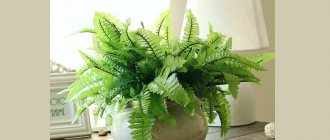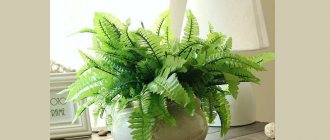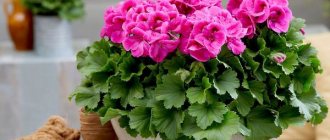What will you read about in the article?
- What potted flowers to choose for the bedroom? Some of the most popular plants
- The healthiest flowers for the bedroom
- Other flowers for the bedroom
- What plants should you avoid in the bedroom?
- The air in our house
- What flowers in the bedroom cleanse the air of toxins?
Flowers enliven the bedroom and make it more cozy; they are also a wonderful decoration. Some plants humidify the air and cleanse it (even of strong toxins!), while others can cause allergies or illness. Therefore, today we present the most popular flowers for the bedroom along with a description of their use and care requirements.
Find out if the plant you keep in your bedroom has a positive effect on your sleep health and if it's worth moving it to another room in the house. Also find out which flowers can purify the air from harmful substances, such as cigarette smoke.
What potted flowers to choose for the bedroom? Some of the most popular plants
To begin with, we will present a few plants that are worth putting in your bedroom and that will additionally provide you with a fantastic decoration. We are talking here about woody and common aloe, Guinea sanseveria and orchid.
Aloe tree and aloe vera are succulents that grow up to 1 meter in height. It is worth pruning them to reduce their growth, while still benefiting from their beneficial properties for our health (they are contained in the gel visible after the leaf breaks down). Aloe in the bedroom filters and humidifies the air.
It will feel best on a windowsill or in close proximity to a window. It grows easily and is drought tolerant (but also frost sensitive). Water once a week, and less often in winter.
Sanseveria Guinea is a variety that, like aloe, grows up to 1 meter in height. It has long, stiff, narrow and upright leaves. Produces large amounts of oxygen, especially at night. It is not a demanding plant and grows well in shady bedrooms. You must remember that it is important to fertilize it and also replant it every few years in a larger pot with fresh soil. Tolerates dry air well.
The orchid has thick, leathery leaves and grows to a height of about 35 centimeters. It has bell-shaped flowers of different colors, collected in a long inflorescence. This plant requires a bright position and high humidity. It does not like too frequent watering, but responds well to (even every day) irrigation with water, for example, from a spray bottle.
Plants that produce oxygen at night:
- Aloe vera and wood aloe. These succulents grow up to 1 meter in height, so they should be trimmed to reap the beneficial properties of the leaf sap.
- Guinean Sanseveria . This plant has long, straight leaves and also produces large amounts of oxygen.
- Orchid . It has beautiful, delicate, bell-shaped flowers and is quite demanding to grow.
Aloe is an amazing plant that makes an interesting decoration for a bedroom window.
Selection of plants taking into account the characteristics of the room
Plants are also selected based on the technical parameters of the room:
- area and volume;
- intensity and nature of illumination;
- air exchange indicators.
Room size
In spacious bedrooms with high ceilings, large plants are placed in large pots in shelves or in floor tubs. A lush, developed crown will not clutter up the bedroom. Climbing plants on light partitions would also be appropriate. A good placement option is opposite a full-length mirror on the wall or in a closet door.
Plants for the bedroom are primarily chosen based on the size of the room.
For small-sized bedrooms, including attic ones with a sloping ceiling, it is better to opt for small plantings in hanging flowerpots. The surface of the dressing table would also be a good place to place it. Plants should not interfere with residents moving around the room and doing household chores.
Illumination
If the windows face north, it is better to opt for shade-tolerant or shade-loving plants. Even a little insolation will be enough for them to fully develop.
Windows facing south require the use of light-loving green spaces. They will make full use of sunlight and delight the owner with lush greenery and beautiful flowers.
Western and eastern directions allow you to choose any flower. It is only important to ensure that in summer, when it is hot, they are protected from direct sunlight with light curtains.
The healthiest flowers for the bedroom
Of course, aloe vera, wood aloe, guinea sanseveria and orchid do not close the list of flowers and indoor plants for bedrooms that purify the air. We have a lot to choose from, for example, the fern is slowly returning to its former popularity.
A fern is a plant with characteristic, green, succulent leaves. Grows well in shady places where temperatures are moderate. It can grow to large sizes and looks good in hanging containers, pots and baskets. The substrate requires constant moisture, which means it needs to be watered two or three times a week. A fern in the bedroom cleanses the air of formaldehyde (which we will talk about a little later).
Can a ficus stand in the bedroom? Through thick and thin! Spring ficus "Robusta" has bare, leathery, glossy, decorative leaves. Like a fern, it cleanses the air of formaldehyde. It prefers bright sunshine and tolerates high temperatures well. Attention! Ficus has poisonous leaves, so keep it away from children and animals.
The influence of indoor plants on humans
Plants for the bedroom have a number of special requirements. They should not only enrich the room with oxygen and please the eye with their appearance, but also bring a certain energy.
Many of the houseplants that are well known to us are nothing more than the fruit of selection of specimens brought from all over the world during the times of great geographical discoveries.
The widely known and beloved “money tree” in nature has a height of up to four meters. Despite the work done on their size and ability to bloom and smell all year round, the plants have not lost their protective ability to secrete poisons and toxins.
The more interesting and exotic the flower, the more dangerous its influence. Some specimens are capable of causing deadly harm.
These are quite rare plants, but it is advisable to remember the list of them:
- Fatsia is a cute and green bush or tree with bright green leaves that can lead to disorders of the nervous system.
- An ornamental tree called polyscias causes irritation when its sap comes into contact with the skin.
- Say goodbye to the plant called alocasia or arma , as it has very significant levels of toxins.
- A tuber with a large leaf and Arizema inflorescence can cause burns on the skin and harm the eyes.
Most indoor plants with toxins are dangerous through direct contact (if you replant without gloves) or if they get into food (pets and children may well taste the flowers).
Plants that are quite dangerous at certain dosages include: aloe, dieffenbachia, monstera, azalea, nightshade, spurge, anthurium, croton, spathiphyllum, asparagus.
If there are such specimens in your home, take care to limit the access of children and pets to them.
Some dangerous plants can bring great benefits at the same time:
- to enrich the room with oxygen, monstera and anthurium are used;
- rosemary, chrysanthemums, chlorophytum, aloe have antibacterial and medicinal properties;
- Asparagus is used to absorb heavy metal microparticles;
- Cyperus and abutilone are used to increase air humidity;
- Geranium is used to disinfect, deodorize and even relieve headaches.
Rose, dwarf pomegranate and herbs are useful and safe for the home.
Do not deny yourself the desire to create a small and useful garden in the atmosphere of your apartment, which will give you not only the external pleasure of contemplation, but also the benefits of vitamins and a fresh aroma.
Other flowers for the bedroom
What other flowers are recommended for the bedroom?
Chlorophytum has decorative saber-toothed leaves (similar to decorative grass leaves). It can be placed in different places because it tolerates both partial shade and sun. In a very dark place it loses its decorative white stripes on the leaves. The herbaceous plant Chlorophytum looks beautiful planted in hanging containers or placed on tall furniture. Great for creating compositions with other indoor plants.
Spathiphyllum is a plant with shiny dark green decorative leaves and original flowers. Purifies the air from toxic substances that can be released by furniture, carpets and plastic. Grows well in semi-shaded and even shady places.
Christmas cactus . It is watered infrequently during most of the year, but more generously from the time the flower buds appear. Does not bloom if it is kept in a warm room (above 22º C). In winter it grows best at temperatures between 10 and 15º C. It does not like to be transplanted and, if necessary, it is best to do so when the roots are coming out of the pot.
Nephrolepis is a type of fern that likes shady places with good humidity (this is worth remembering, especially during the heating season). It can be sprayed with water every day, and also placed in a pan with water and pebbles. Large Nephrolepis ferns look beautiful in hanging containers and pots.
Kalanchoe
A flower with thick, fleshy leaves that does not require special care. This is a good solution for those who have a love for exotic indoor plants: they have an interesting leaf shape and very beautiful flowering. Kalanchoe blooms once a year, but very abundantly and colorfully. In addition, it belongs to the category of healing indoor flowers, and therefore it definitely won’t hurt to purchase it.
Kalanchoe is not just a healing plant, it can serve as a bright accent to attract attention
What plants should you avoid in the bedroom?
Although most plants are beneficial to our health, some of them can be harmful. We are mainly talking about cut flowers, with a strong aroma that can cause allergic reactions in sensitive people. Moreover, this smell often interferes with sleep.
Therefore, it is better not to place potted flowers such as hyacinths or oleanders, as well as bouquets of lilies, roses or hydrangeas in the bedroom. It is also not recommended to grow begonias, primroses, lilies of the valley, African violets or Persian cyclamen in the bedroom.
If there are small children or animals in the house, it is better not to leave flowers such as philodendron, beautiful shpurg (the so-called Star of Bethlehem), anthurium, diefenbachia, monstera, oleander, ficus, dracaena, allocasia and spathiphyllum in the bedroom (and at home in general). Although they have a good effect on the microclimate in the room, consuming their leaves can lead to poisoning.
Let us add here that, according to the principles of Feng Shui, it is better not to use flowers in the bedroom. As living, developing organisms, they bring energy of movement, vitality and growth into the room, which is not conducive to rest. Particularly unacceptable are cacti, whose needles symbolize fencing and protection from the outside world. Sharp shapes, according to Feng Shui, increase tension and disrupt the feeling of comfort that we would prefer to avoid (especially in the bedroom).
Plants that are not recommended to be placed in the bedroom:
- Intensely fragrant potted and cut flowers: hyacinths, oleanders, begonias, primroses, lilies of the valley, African violets, Persian cyclamen, lilies, roses, hydrangeas.
- Flowers with poisonous leaves: spathiphyllum, monstera, discharge, dieffenbachia, anthurium, star of Bethlehem, dracaena, oleander, ficus, philodendron.
- According to the principles of Feng Shui, you should avoid placing flowers in the bedroom, especially cacti, whose needles cause discomfort and tension in the interior.
Hyacinths are not a good choice for the bedroom due to their intense scent.
Cyclamen
Loves light, but does not tolerate direct sunlight. It blooms profusely, brightly and beautifully, loves humidity, so it is better not to place it above radiators. He needs fresh air, it is advisable to ventilate the room regularly. Tolerates low temperatures well.
Cyclamen in a pot
The choice of plant for the bedroom should be approached very responsibly, because this is the place where a person spends most of his leisure time, in fact, a third of his life. Therefore, you should not place the first flowers you like in the room; you must first study their properties and effects on the body.
What flowers in the bedroom cleanse the air of toxins?
Why are we writing about this? One NASA study found that some houseplants can absorb most of the harmful substances mentioned above. It is estimated that thanks to them we can remove them from the air by even 85%. What are these plants? We've already mentioned a few of them, but for the sake of order, we'll also talk about them in the context of detoxifying the air.
For example, fern not only promotes proper air humidification, but also cleanses them of formaldehyde, xylene and carbon dioxide. Ivy absorbs formaldehyde, benzene and carbon dioxide. Good for areas with low sunlight, and by using appropriate supports you can give it interesting shapes.
Azalea is a flower that can handle formaldehyde cleansing. However, this is a very demanding plant. In turn, it allows you to remove formaldehyde, xylene and trichlorethylene from the air. Philodendron can filter the air from many harmful substances (benzene, ammonia, formaldehyde), but it is dangerous (so it is better not to store it if there are small children or animals in the house). Chrysanthemums remove formaldehyde, ammonia, benzene and xylene from the air, and spathiphyllum removes benzene and formaldehyde.
Thanks to anthurium, the air in the bedroom will be better humidified, in addition, you will get rid of substances such as xylene or toluene. Skinapsus loves shady places, and gerberas love sunny places.
Houseplants cleanse the air of many toxins.
Main types of house plants
When choosing the best plant for your bedroom, you should first study the main types of indoor flowers. It is believed that each “green friend” has special energetic qualities, having a special effect not only on human physiology, but also on his energy status. Considering this feature, all plants for the home can be divided into the following categories:
- Donors;
- Vampires;
- Charms;
- Space purifiers;
- Neutral;
- Intoxicating;
- Poisonous.
In fact, the same flower can belong to several categories at once. Unfavorable combinations lead to the fact that flowers cannot be kept in the bedroom, in the child’s room or in the study.
Epipremnum aureus
A very persistent and unpretentious plant. One of the best and effective filters against harmful and toxic substances that can enter the bedroom (formaldehyde, benzene, vehicle exhaust gases, etc.).
If you have neighbors who have a bad habit of smoking on the balcony, and all the smoke comes into your bedroom, then this plant is the best thing you can place in your room. It clears the room of cigarette smoke. Suitable for a bedroom whose windows overlook the roadway. If your apartment is located in an active industrial area, be sure to purchase this plant. Epipremnum promotes healthy sleep and protects human health.
- Filters the room from harmful substances.
- A persistent and hardy plant.
- It does not tolerate drafts, so you should not place it on a windowsill where there will be constant blowing on it.
- It should not be exposed to direct sunlight, but at the same time it needs good lighting.
You need to water the plant moderately so as not to spoil it. Excess moisture is unacceptable. But you can’t overdry it either. For proper nutrition, it needs to be fed once every 2 months. The plant is quite common; you can buy it at a regular flower shop or order delivery online.
Cost: from 500 rub.
Gardenia
The pleasant aroma of the flower calms the nervous system and evokes pleasant dreams due to its effect on the sleep center in the brain. We can say that the plant acts on humans as a sleeping pill.
- Brings positive energy.
- Positively affects sleep and well-being.
- The plant is not easy to care for.
- Does not like drafts and direct sunlight.
- Doesn't like changes.
- Strong odor when flowering.
The plant requires constant good lighting, moderate watering and regular irrigation of the leaves with water. Excess moisture must be completely removed from the pallet. Constant fluctuations in room temperature can lead to deterioration in the condition of the flower.
When buying an adult bush, you need to be prepared for the fact that not every flower tolerates a change of environment well. It is better to take young plants, they will quickly get used to the new room. Water thoroughly during flowering. At other times, the amount of watering should be reduced. Water once every 3 days.
The smell during flowering is very pleasant, but can have a stimulating effect on the nervous system. The main thing is to monitor your well-being. If the aroma of a plant does not allow you to fall asleep quickly and peacefully, then it is better to choose another place.
Cost: from 450 rub.
Popular “green inhabitants” for the bedroom
The best indoor plants for the bedroom that green and decorate the space:
- Chlorophytum. Helps humidify and purify the air, destroy toxic harmful substances, kill pathogenic microorganisms, creating a practically sterile place nearby. It is used to determine the level of air pollution: the higher it is, the stronger the growth of chlorophytum. This “air conditioner” perfectly absorbs cigarette smoke, carbon monoxide, and also neutralizes electromagnetic radiation;
- Spathiphyllum. Such a “living filter” frees the air space from harmful impurities that can enter the room through an open window. It has a positive effect on the nervous system, creates conditions for healthy sound sleep, produces oxygen and substances that are beneficial to the human body and destroy pathogenic bacteria;
- Kalanchoe. This beautiful indoor flower releases oxygen all night, calms you down, and relieves depression. Has pronounced bactericidal properties. Special substances with a relaxing effect that Kalanchoe secretes improve sleep and protect against nightmares;
- Geranium. It has disinfecting properties, destroys carbon monoxide and volatile chemical compounds in the air. Helps cope with insomnia, headaches, supports immunity, stabilizes blood pressure, relieves tension. Geranium oil has antiviral and bactericidal properties, so if such a beautiful “pet” is in the rest room of your spouse or children, do not be afraid of viruses and colds. But it can cause aggravation in allergy sufferers;
- Aloe. At night, it destroys carbon dioxide and releases oxygen. In the sleeping area, it eliminates electrification and absorbs 85% of the toxic elements that furniture releases from chipboard. Produces phytoncides that kill pathogens, helps improve the atmosphere, especially when there is a sick person in the room;
- Mother-in-law's tongue (Sansevieria). The great benefit of this green “conditioner” is that it destroys harmful fumes formed in synthetic materials, helps improve immunity, stabilizes blood pressure, and eliminates breathing difficulties and headaches. Mother-in-law's tongue fights poisons and harmful substances that furniture materials release into the air, and neutralizes unpleasant odors. Has antiviral and antibacterial effects.
Names of other useful “green pets” for a vacation spot:
- Hibiscus;
- Jasmine;
- Begonia;
- Lavender;
- Myrtle;
- Anthurium;
- Cyclamen;
- Rose;
- Ficus;
- Hamedorea.
You can find photos of these plants on the Internet or in books, and choose any one you like.
Jasmine
A beautiful flower that has an unusual property. Scientists from Germany have found that jasmine releases substances that relieve nervous tension, anxiety and anxiety. The flower calms the nervous system, has a beneficial effect on well-being, and ensures healthy and sound sleep. It is also called the “sleepy” flower.
- Improves sleep.
- It has a calming effect on a person.
- Easily tolerates high temperatures.
- Some varieties have a strong aroma. Sleeping with such a flower in the bedroom will be quite difficult and unpleasant. Choose plants that do not have such a strong aroma. And also do not place it near the bed.
A few words about dry bouquets
In addition to fresh flowers standing in a vase or growing in pots, dried bouquets can come into the bedroom. For example, it was once fashionable to place dried immortelle flowers or a bouquet brought for a church holiday in a wooden vase.
Dry or withered flowers and bouquets should not be placed in the bedroom, this harms the energy of the room. In addition, dry bouquets are a wonderful dust collector and a source of allergies. So it is better to get rid of old bouquets, herbariums, and diseased flowers in a timely manner. Without them, it will be more spacious, cleaner and more comfortable, which will certainly affect the quality of sleep and dreams.
Properly selected fresh flowers will make the bedroom cozy, lift your spirits, and improve your well-being. Some plants from the undesirable list take root well in offices and public places.











